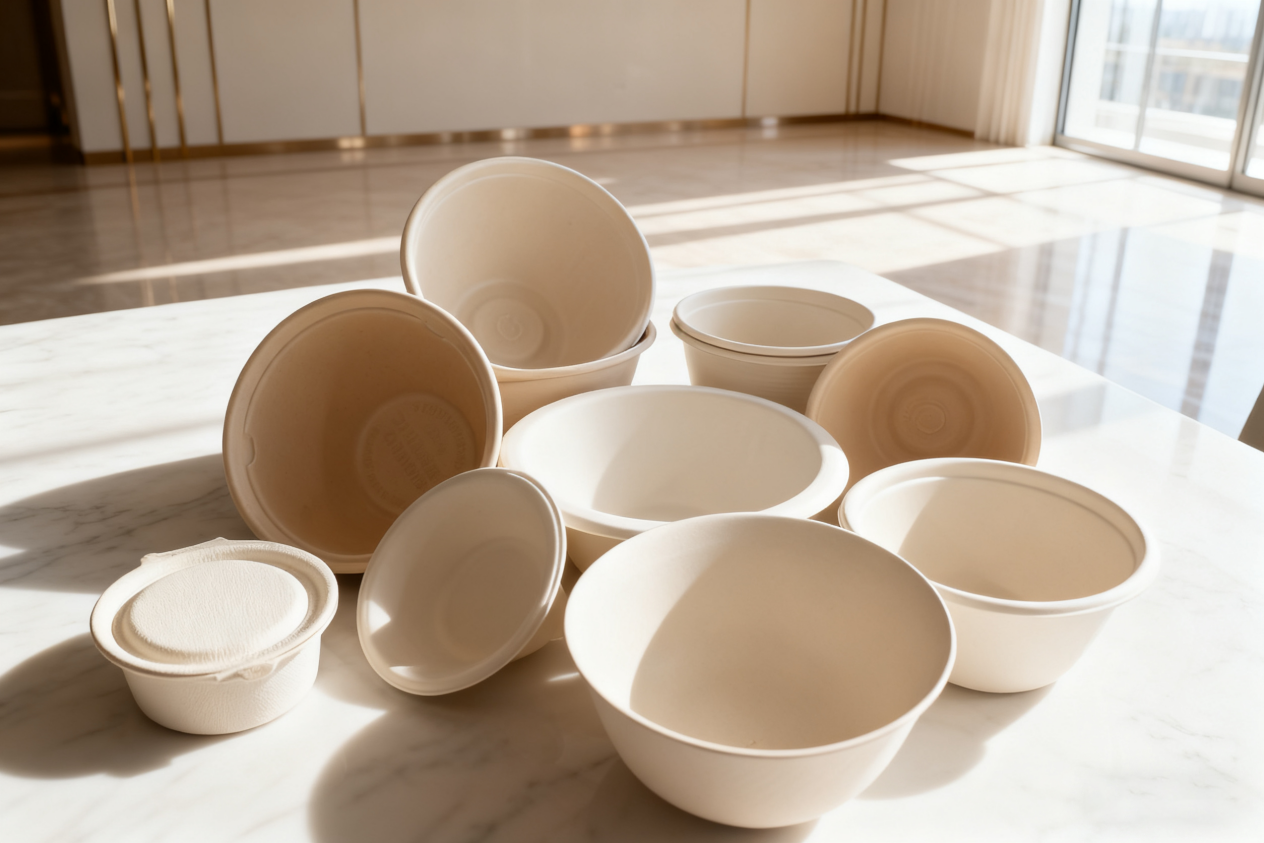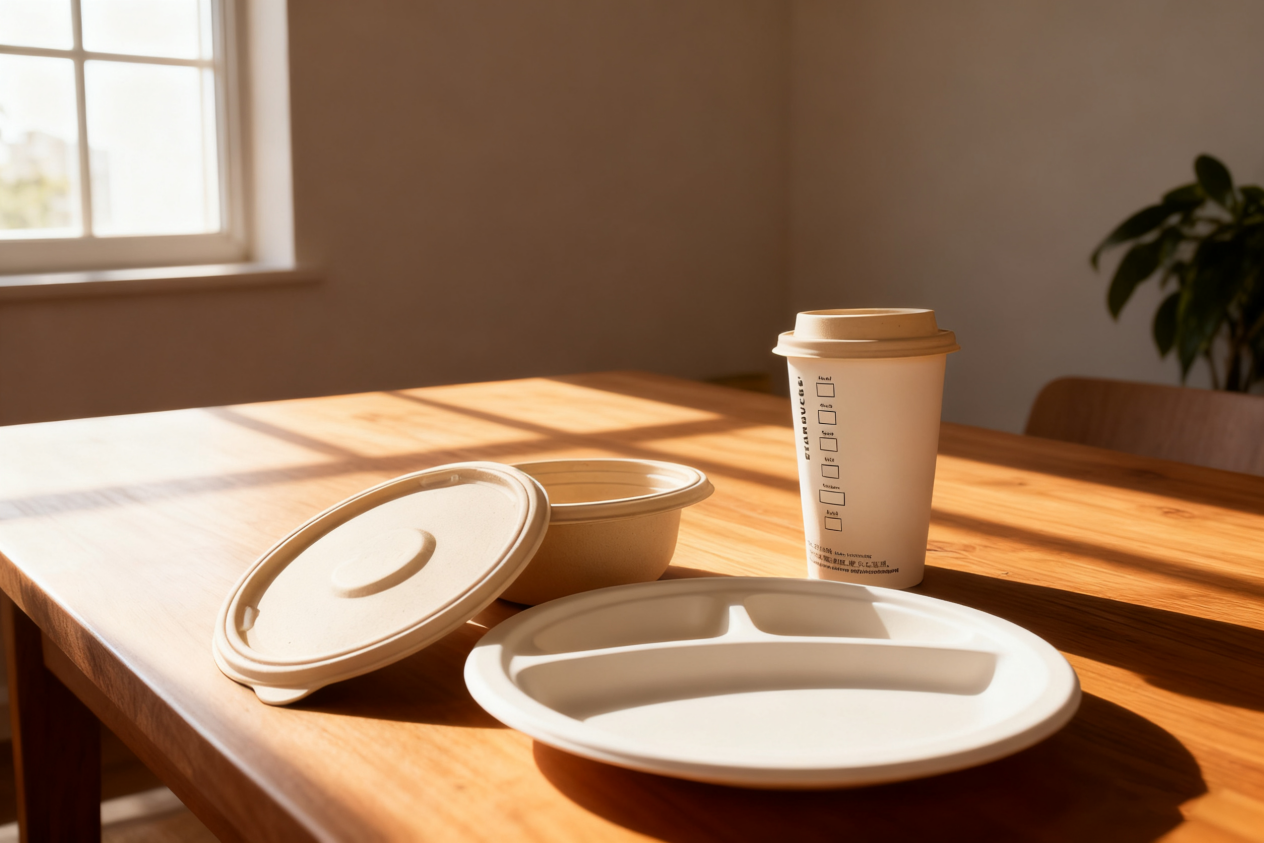
[News]Competitive Dynamics Between Molded Pulp and Plastic Packaging Across Different Time Horizons
Release time:
Nov 13,2025
As global sustainability awareness deepens and environmental regulations tighten, the packaging industry is undergoing a profound transformation. Molded pulp packaging and traditional plastic packaging—two key components of the sector—are experiencing shifting competitive dynamics over time. From short-term cost trade-offs, to mid-term policy impacts, to long-term value competition, their development trajectories are increasingly divergent.
As global sustainability awareness deepens and environmental regulations tighten, the packaging industry is undergoing a profound transformation. Molded pulp packaging and traditional plastic packaging—two key components of the sector—are experiencing shifting competitive dynamics over time. From short-term cost trade-offs, to mid-term policy impacts, to long-term value competition, their development trajectories are increasingly divergent.
Short Term (1–3 Years): Plastic’s “Paper Advantage” Remains Hard to Shake
In the short term, when focusing solely on direct production and logistics costs, plastic packaging still holds a clear "paper advantage." Its low per-unit cost and high transportation efficiency allow it to maintain strong competitiveness in low-value-added applications such as disposable food containers and low-cost cushioning materials. For cost-sensitive small and medium-sized enterprises (SMEs), plastic packaging may still appear to be the optimal choice in the immediate term.

However, it is crucial to recognize that this "advantage" of plastic is built upon the externalization of environmental costs. The pollution control, ecological restoration, and carbon emissions generated throughout the lifecycle of plastic packaging—from production to disposal—are not reflected in companies' direct expenses, but are instead borne by society and governments. This so-called "low cost" masks significant environmental risks and social burdens, falling far short of true sustainable development.
Medium Term (3–5 Years): Policy-Driven Restructuring of Cost Structures
As we move into the medium term (3–5 years), environmental policies worldwide are being implemented with unprecedented force, rapidly internalizing the compliance costs of plastic packaging. As a result, its traditional cost advantage is eroding, and the industry’s cost structure is being fundamentally reshaped.
Globally, measures such as the "plastic tax" have been introduced in the EU, Canada, and several Southeast Asian countries. The EU, for example, levies a tax of €0.8 per kilogram on plastic packaging. In China, the "plastic ban" policy continues to deepen, with a clear target to completely phase out non-degradable plastic bags by 2025. These regulations place mounting pressure on businesses that continue to rely on plastic packaging—not only through direct tax liabilities but also through rising waste management costs for landfilling and incineration.
At the same time, consumer awareness of environmental issues is growing, and preferences for eco-friendly products are strengthening. Continued use of plastic packaging may damage brand image and reduce consumer trust and loyalty. Against this backdrop, molded pulp packaging begins to benefit from policy incentives and its inherent environmental cost advantages.

Made from renewable plant fibers such as recycled paper, sugarcane bagasse, and bamboo, molded pulp fully complies with global regulations like the "plastic bans." It incurs no plastic taxes and, in some regions, even qualifies for environmental subsidies. Environmentally, it emits only one-third of the COD (Chemical Oxygen Demand) during production compared to plastics, and at end-of-life, it can naturally degrade with near-zero disposal costs. For export-oriented companies, adopting molded pulp packaging effectively mitigates compliance risks associated with environmental regulations, making it a strategic choice in the medium-term business landscape.
Long Term (5+ Years): Molded Pulp Achieves Lifecycle Cost Leadership
When viewed over a longer horizon—beyond five years—the total lifecycle cost of molded pulp packaging gradually surpasses that of plastic, ultimately reversing the competitive balance. At this stage, factors such as resource sustainability, brand equity, customer loyalty, and carbon neutrality goals become decisive in packaging decisions.
In terms of resource sustainability, molded pulp relies on renewable plant fibers that can be recycled and reused, significantly reducing dependence on fossil fuels. In contrast, plastic is derived from petroleum—a finite resource. As extraction becomes more difficult and reserves dwindle, oil prices face long-term upward pressure, while oil exploration and refining continue to cause severe environmental damage.
From an end-of-life perspective, molded pulp products naturally degrade or compost within 6–12 months, leaving no long-term ecological debt. In contrast, approximately 80% of plastic waste ends up in landfills or incinerators, incurring high treatment costs and generating persistent environmental hazards such as microplastic pollution and dioxin emissions.
Relate Blog
undefined
Minjie Eco-Machinery Technology Co., Ltd.
Factory
Tangxia Town, Pengjiang District, Jiangmen City, Guangdong, China
Operation Center
Lihe Science Park, Shishan Town, Nanhai District, Foshan City, Guangdong, China



